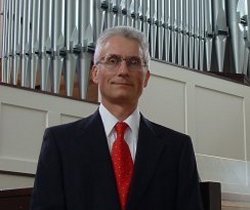The legendary American concert accordionist, Anthony Galla-Rini (b. 1904)
said, "The Rhapsody was (and still is) extremely popular
among accordionists; I began playing it myself soon after the first piano
and orchestral reduction score was published."
The Rhapsody was performed in dozens of recitals by other virtuoso
accordionists. Accordion World magazine listed performances by
artists such as
Anthony Galla-Rini (October 1936),
Frank Gaviani (Zordon Hall in Boston, October 1936),
Andy Arcari (Musician's Hall in Philadelphia, April 1937 and Rivoli
Theater in Toledo, April 1938)
and Rosamund (Carpathia Park in Detroit, June 1938).
Domenic and Anthony Mecca played their own duet version of the
Rhapsody at the historic Charles Magnante Accordion Recital
held at New York City's Carnegie Hall on April 18th, 1939.
Mort Herold (b. 1925) played the entire Rhapsody in recital at the Chicago
Civic Opera House on November 15, 1947 to an audience of 3,500. Accordion
World Magazine called the concert, "one of the year's outstanding
accordion events."
Accordionists also recorded the Rhapsody, beginning with the duo of
Basil Fomeen and Nick Hope on the Victor Record Company label in 1928.
(The only other recording of the Rhapsody available at this time was the Victor two-record set of George Gershwin with the Paul Whiteman Concert Orchestra.)
Most accordion performances of the Rhapsody (including the
recording by Fomeen and Hope) were abridged solo arrangements -- only the
most popular sections were included -- but a few accordionists actually
played the complete work with orchestra. Edwin Davison wrote in The
Golden Age of the Accordion, "In 1939 Arthur Metzler [b. 1915]
appeared in concert at Kimball Hall [in Chicago] where he played the
complete 31 pages of George Gershwin's Rhapsody in Blue with a
symphony orchestra under the direction of his teacher Andy Rizzo. The
performance was a tremendous success."
Perhaps one of the greatest accordionist to perform the complete
Rhapsody with orchestra was Cornell Smelser. Lester Sims wrote in
the February 1938 issue of Accordion World, "I met Cornell Smelser
(a truly great genius) many times, and heard him play. He once played
Gershwin's "Rhapsody in Blue" in its entirety [italics by Sims] on
the accordion; something I doubt any living accordionist has ever
attempted."
C. Hilding Berquist expressed his appreciation of Smelser in the July 1947
issue of Accordion World, "Probably the first time in radio history of an
accordionist's appearance with an outstanding orchestra occurred on the
evening of April 20, 1931 (16 years ago) when Cornell Smelser played the
Rhapsody in Blue by George Gershwin in its entirety on the Gold
Medal Fast Freight Program over WJZ and the NBC national network,
accompanied by the Ohman-Arden Orchestra of some 40 musicians.
"Of special note was the fact that Cornell was the only accordionist given
permission by Gershwin himself to play it over the ether. Also, the only
other musicians permitted to broadcast it at that time was Paul Whiteman's
Orchestra and the organist Jesse Crawford, with Gershwin himself at the
piano."
Berquist wrote later in the July 1950 issue of Accordion World, "Cornell
Smelser was born on August 7th, 1902, in Budapest, Hungary. Piano was his
original instrument and he received his musical education at the
Conservatory of Music in Budapest. . . He came to New York in 1920.
"First appearing as an accordionist on the jazz scene somewhere in the
late 1920's, he blazed across the jazz firmament like a meteor, only to
vanish -- in mid-1931 -- as quickly as he had first appeared. . . This is
because . . . illness, tuberculosis, . . . prevented continuance of his
career."
Doktorski's recording with the Duquesne Chamber Players is the very first recording of the complete unabridged Rhapsody with accordion and chamber orchestra.





